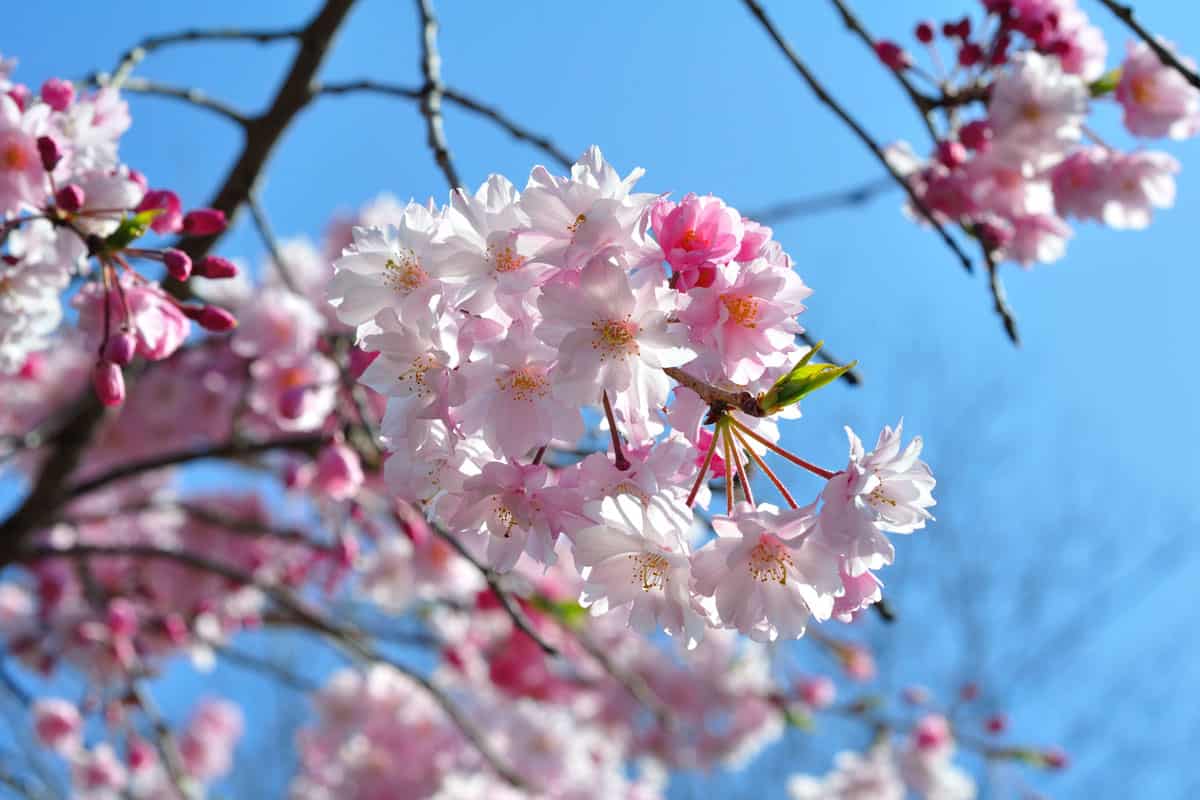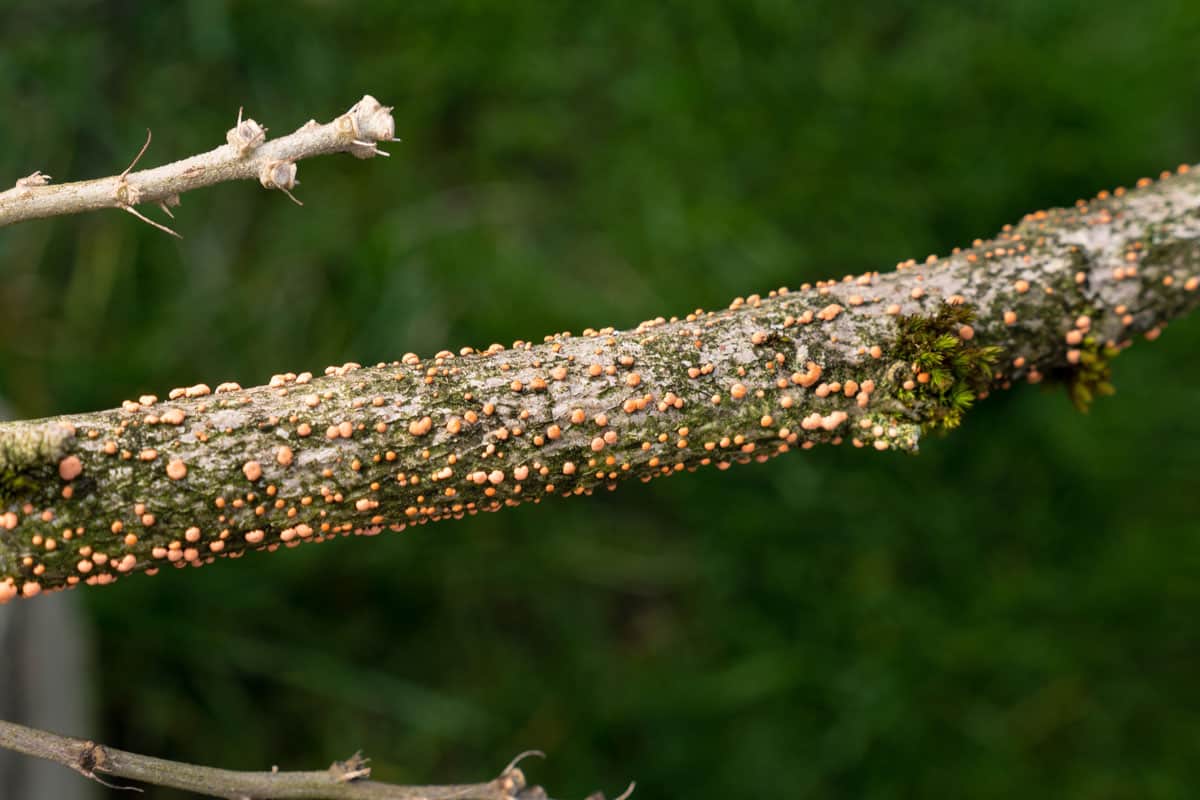A Weeping Cherry Tree can be a beautiful addition to your yard's landscape. Although it is prone to diseases and fungal infestations, its bloom offers captivating and jaw-dropping beauty.
But when do they start blooming? Do the cherry tree blooms last for a year? We researched this and more to provide you with the answer. Let's dive right in!
Generally, a Weeping Cherry Tree has a short lifespan. It blooms during early spring and will last for 2 to 3 weeks, but the one with double blossoms lasts longer.
Would you like to learn how to grow and care for a weeping cherry tree? How to achieve perfect springtime pink blossoms? Read through this post as we answer your questions!
What Season Do Weeping Cherry Trees Bloom?

Weeping Cherry Trees or Weeping Higan Cherry Tree is a cultivar that grows fast and blooms in spring. Its dazzling flowers are eye-catching and perfect for any landscape.
Although the flowers are short-lived, the weeping cherry tree is still a sight.
This tree loves full sun and well-drained soil. It is necessary to limit watering in winter to keep the soil moist but not soggy, ensuring that the tree properly blooms once spring arrives.
Your best bet is to plant this tree in spring to bloom. It grows 2 feet yearly, reaching 30 to 50 feet high in maturity. A weeping cherry tree takes 5 to 6 years to grow to its full size.
Are Weeping Cherry Trees Invasive?
The weeping cherry tree is ornamental, and the root system is non-aggressive. The roots do not spread and invade other areas.
All species of Weeping Cherry Trees' rooting system grows 2 feet below the ground and spread up to 2 to 3 times the width of the tree's canopy.
That is why it is best to plant the tree a little further from your house to avoid moving it when it grows taller after a few years. It is advisable to plant this tree 10 to 20 feet away from your home.
This is also to avoid the danger of falling trees during an emergency.
What Soil Does Weeping Cherry Trees Prefer?

Loam soil is the ideal type of soil for the weeping cherry tree. It has better drainage and water infiltration. The weeping cherry tree loves soil with high nutrition and has organic matter broken down into the soil.
Can You Eat The Fruit From A Weeping Cherry Tree?

The fruits from the weeping cherry tree are not edible. The pit found at the center of the cherry from this tree is said to be poisonous, and the cherry itself is extremely sour.
The weeping cherry tree is considered more ornamental than a food source for human consumption.
Do Weeping Cherry Trees Shed Leaves During Winter?

The leaves turn bright yellow before dropping at the end of autumn towards the start of the winter season. The low drooping branches still look attractive even after losing the crown.
The leaves will grow back in the springtime.
How Much Water Does A Weeping Cherry Tree Need?
It is necessary to water the weeping cherry tree once or twice per week in summer to keep the soil wet but not too soggy. This is enough to let the water get through the ground and allow the roots to absorb it.
Water the tree once in 2 to 3 weeks in winter because it does not need too much water during this season. Ensure that the top soil is dry before watering again.
When Should You Fertilize A Weeping Cherry Tree?
We recommend fertilizing the weeping cherry trees in early spring. Annual feeding is essential to replenish the lost nutrients over time and during winter.
Check the label on the fertilizer's manufacturer and follow the instructions for feeding your tree.
What Happens If My Weeping Cherry Tree's Soil Is Too Wet?
The weeping cherry tree's roots will rot if the soil is too damp. The tree's growth slows down during winter and doesn't need more water. Soggy soil attracts pests that harm the tree.
Weeping cherry tree needs full sun and requires well-drained, moist soil. It can tolerate clay soil but is not soggy or damp.
What Diseases Can Cherry Trees Get?

Cherry trees are prone to fungal or bacterial development, especially if the soil is too soggy or damp or due to insect infestations.
Cankers, X disease, leaf spots, gray mold, black knot, verticillium wilt, and plum pockets are common bacteria and fungal diseases on cherry trees.
Cankers

Cankers cause a sour-smelling smell. These bacteria attack tree trunks and branches that turn the inner bark of a tree brown. The leaves develop spots. You will also notice new shoots die suddenly due to branch dieback.
To remove cankers, prune the tree and remove the infected areas. Pruning will work if the infestation is still in its early stages.
However, if cankers spread out to different branches or even to other trees, you may need to cut down the tree and remove the roots because they could also be infected.
You may start planting with a new tree but remember to replace the soil because cankers can still survive there.
X Disease
There is no cure to treat X disease from your cherry tree. You must cut the tree and remove the roots to avoid infecting other trees. Leafhopper insects carry this disease and transmit it from one tree to another.
Look around the yard and remove all the infected trees within 500 meters of the infested cherry tree. Even a tree that looks healthy could harbor X disease and spread it later on.
Leaf Spot

A leaf spot on a cherry leaf is a fungal disease that causes brown spots. Remove all infected leaves on the tree as much as possible, then spray fungicides.
You can also use baking soda, dishwashing soap, and water to remove these fungi.
Click here to check this fungicide on Amazon.
Gray Mold

You can treat gray mold on cherry trees using copper fungicides or captan. Check the package instruction on how to apply a fungicide.
Click here to check copper fungicides on Amazon.
Black Knot
Pathogen Apiosporina Morbosa causes black knots on cherry trees. The spores spread on trees and shrubs, traveling through rain and wind. You can see the black knots on tree branches and trunks.
Use fungicides that contain lime sulfur, thiophanate-methyl, chlorothalonil, or captan to prevent the spreading of the black knot.
However, this does not cure the infected parts. You may use the fungicides on new plants in spring and summer to avoid infestations.
See captain fungicides on Amazon.
Verticillium Wilt
Pruning, fertilizing, and watering can help extend your cherry tree infested with verticillium wilt, but no fungal treatment is available.
Plum Pockets

Plum pockets are a fungal disease that causes small blisters on cherries. The blisters grow fast and cover the fruits. Infected fruits can grow abnormally compared to their actual sizes with spongy textures.
These fruits will eventually dry out and turn black.
You can use copper sulfate or liquid lime fungicides to treat plum pockets. Ensure that your specific plant species are on the product label, or else you can't use it.
Click here to check copper fungicides on Amazon.
How To Remove Black Aphids On Cherry Trees?
Black aphids are insects that love cherries. You can easily spot them on your tree. They have a metallic, shiny black appearance; some have wings, and some are wingless.
These aphids feed off your tree and could kill it. Too many fertilizers attract black aphids. They hatch eggs before the tree blooms.
Here are ways to get rid of aphids:
- Attract natural predators such as ladybugs and soldier beetles. You can grow perennials around your cherry tree that ladybugs love.
- Prune the infected branches and leaves.
- Spray neem oil or use insecticides.
To Finish Up

Weeping cherry tree blossoms are a must to see in the springtime. Proper care of weeping cherry trees helps the tree last for years and blooms well every spring.
Before you go, here are some more posts about cherry trees:
Why Is My Weeping Cherry Tree Dying? [And What To Do]
Cherry Tree Leaves Have Holes; Why And What To Do?
When To Plant Cherry Trees By Zone? [And Tips For Best Growth]





